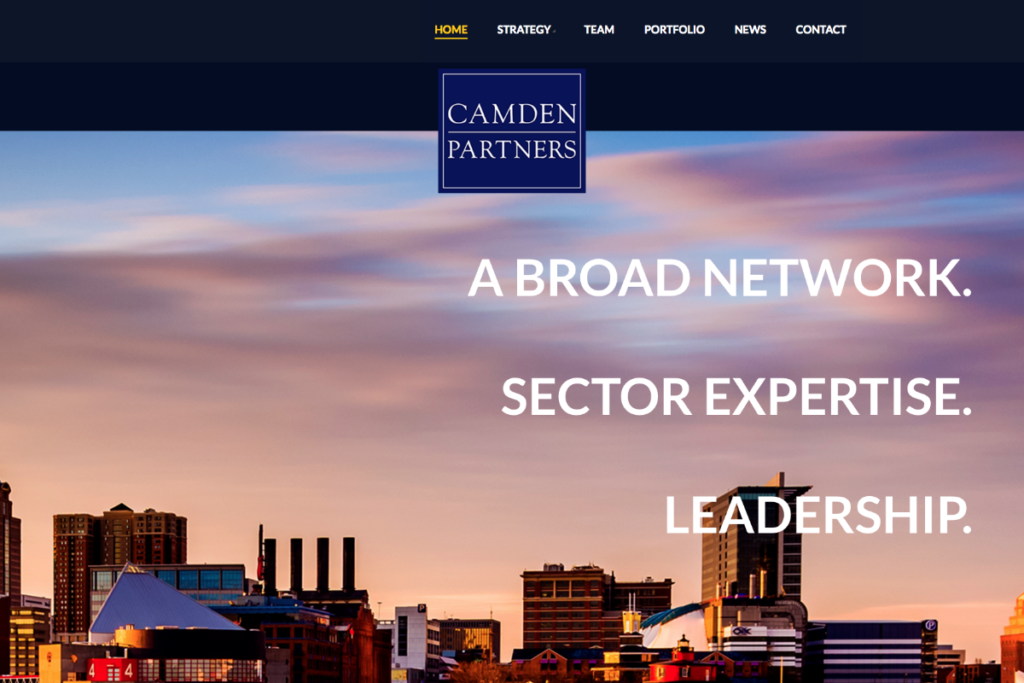How long have you been affiliated with Johns Hopkins?
First of all, thank you for the invitation to the conference, Hall. This is a great event, and I’m excited about participating in it. To answer your question, I joined the Johns Hopkins Medicine board of trustees in July 2010 and became chairman of the board of Johns Hopkins Medicine International in July 2011. It’s a honor to be a part of the leading academic healthcare brand in the world. We have a stellar team representing an amazing institution globally.
How did get into the private equity world?
At Harvard Business School, I was very fortunate to get to know a couple of professors who were willing to meet with me as a first-year MBA student. They took me under their wing and provided personal introductions to leading venture capital and private equity leaders, including many HBS graduates. This private equity industry has a lot of business school graduates from a very limited number of schools, so the network effect is really important. Ever since business school, I’ve enjoyed this industry immensely, and these initial contacts from the folks from Harvard Business School were instrumental, so I’m very grateful.
You and your partners manage close to $1 billion. Where are you planning to take Camden Partners into the future as far as funding goes?
As our assets under management grow, we anticipate gradually increasing our fund sizes with each subsequent fund. Serving as a steward of capital – our own capital and our investors’ capital – is a real honor. I’m very proud of the current portfolio, but perhaps most importantly, my partners and I have the opportunity to work with some of the country’s best CEOs. It is humbling to be able to work with these ladies and gentlemen, and we are pleased to be able to call them part of the Camden family.
What is your investment strategy? How do you choose companies?
Venture capital and private equity are very relationship-based businesses. Camden has raised many funds in the last 20 years, and we’re now backing folks whom we’ve backed before. We work with business builders with whom we have previous relationships, whether they’re the CEOs, the founders, co-investors or deal sourcers. My partners and I truly place a priority on people, people, people, and serial relationships are the key driver for what we do. The best entrepreneurs and executives – the people who have been in this business for multiple cycles – know how they want to build their next operating company and they know which trends are important and I think we likewise have a good sense for how industries evolve over time. There’s some trend recognition and predictive skills needed in our investing industry, but much of the success is attributable to people.
You are doing well with Essence Group Holdings Corporation and PatientSafe Solutions in the portfolio. What made those relationships a success? Was it prior relationships?
These are excellent examples of prior relationships with management team members. Then, when you combine the “people factor” with a focus on reimbursement trends, you have a winning formula. Regarding new reimbursement strategies, Essence is the leader in population health management, evidenced but it’s recent No. 1 KLAS ranking in population health services. Essence focuses on a trillion dollar market opportunity, and we are very pleased with the company’s positioning and progress. PatientSafe is a national leader in mobile clinical communications by leveraging its technology leadership in point-of-care (POC) medication management and barcode scanning. PatientSafe is benefiting from the very powerful change in healthcare regarding how clinicians are communicating across the enterprise amongst their fellow clinicians and making sure that they’re capturing the clinical and financial patient data at the point-of-care. We do pay a lot of attention to how people are paid in healthcare. We basically follow the money.
Two of our panel topics are “new forms of payment” and “value-based healthcare.” What’s your take on those two trends? Are those real drivers for you?
Very important. Hundreds of billions of dollars will be spent on value-based care within the next several years. This is only a fraction of the $3 trillion healthcare industry. Value-based contracts are an integral part of the future of American healthcare, but they come in a variety of flavors. There are pure capitated risks, contracts where the providers are completely on the hook for quality and cost. But there are also “toned-down” risk contracts where the providers are not exposed to both upside and downside risk. The concept of value-based contracts, i.e. population health management in general, is arguably the top trend in healthcare.
Talk about what you look for in management teams in your space and what they need to have in order to get traction with you or any top class investment group.
#1: character and integrity. #2: a real track record of success with institutional capital. In private equity, venture capital and growth equity, we’re investors in high-growth private companies, and we’re responsible to our limited partners for how we allocate capital. Backing previously-successful CEOs is very important to us. Regarding our investment strategy, we place a real premium on what we call technology-enabled service companies that possess hybrid business models that differentiate based on great customer service on the front end combined with proprietary technology on the back end that helps the business scale. This is a very powerful front end-back end combination. We invest in people with expertise in these kinds of businesses. These are not pure technology, “dot com” businesses but rather technology-enabled businesses in vertical industries like healthcare, education and business services. Our investments are also generally not pure service businesses. If we end up investing in a service business, we like to quickly figure out how we can inject technology into the business model to optimize returns.
What technology drivers and trends are important to this area?
#1 Point-of-care technologies that enable mobility. #2 Revenue cycle management (RCM) companies, i.e. companies that improve CFOs’ management of cash in terms of how providers/payers are paid and when they’re paid. #3 Technologies that help payers and risk-savvy providers parse out the bundled payment received for a certain disease or clinical diagnosis. When I talk about the future of healthcare, I frequently say that we’re in the second inning of an extra inning baseball game in terms of how technology can transform the delivery of healthcare. These three technology drivers listed above epitomize how patients are going to get higher quality healthcare at lower costs with better access over the next 25 years. Healthcare is an exciting sector in which to be investing.
Perhaps a fourth technology trend is the cost-cutting or the bending of the healthcare cost curve. We invested in a company called IPG, the nation’s leader in device benefit management (DBM). IPG is focused on managing the costs associated with medical device expenditure, thereby facilitating a more efficient marketplace in terms of the right device is used for the right diagnostic code at the right acuity level with the right price with the right compliance metrics with the right clinical outcomes.
What kind of value does Camden Partners bring to a portfolio company?
When we make an investment, we lead (or co-lead) the financing and oversee our investment by joining the board of directors. In the spirit of traditional private equity, we don’t take operating roles. We hire great operators and help the management team strategize regarding growth avenues, product issues, personnel requirements, etc. I think “value add” is much more than just capital, particularly in the area of making introductions and building relationships: relationships to build out management teams, relationships to build out boards, relationships with strategic partners to drive revenue growth, relationships with investment bankers and strategic buyers to assure liquidity in a reasonable timeframe. Beyond relationships, the second area of “value-add” is strategic guidance, as we try to serve as a true partner with our entrepreneurs and give them suggestions regarding business model issues, service line extensions, personnel requirements or general shareholder value creation strategies. When my partners and I invest in the same people for the second or third time, it’s a win-win situation driven by serial relationships.
Talk about a specific portfolio company and what value you guys brought to them specifically.
A good example involves one of our private companies, so while I can’t reveal the name of the company, we added significant value by identifying two different sources of financing (one debt and one equity). We introduced them to several potential customers, one of which has signed a large contract and one of which will hopefully sign soon,,and if it does come on board, it would totally change the trajectory of the company in terms of moving upmarket with larger account size, better pricing and more of a fully-integrated offering (vs. a single product offering). There are many other examples, but in the end, we are in the business of rolling up our sleeves and helping our CEOs and CFOs build enterprise value.
Do you have any ties to Texas or Austin?
Camden Partners has limited partners in Texas, and we have had some very successful investments in Texas. While Camden is a national brand and is now one of the oldest and largest growth equity funds in the country, there is a great opportunity in Texas to continue the same growth equity investment strategy that we have enjoyed nationally. We love Texas, and Austin is a great example of the sheer magnitude of opportunity: the presence of top-tier technology coupled with an abundance of great entrepreneurs and managers. Austin, and Texas in general, is an important piece of our long-term investment strategy.





